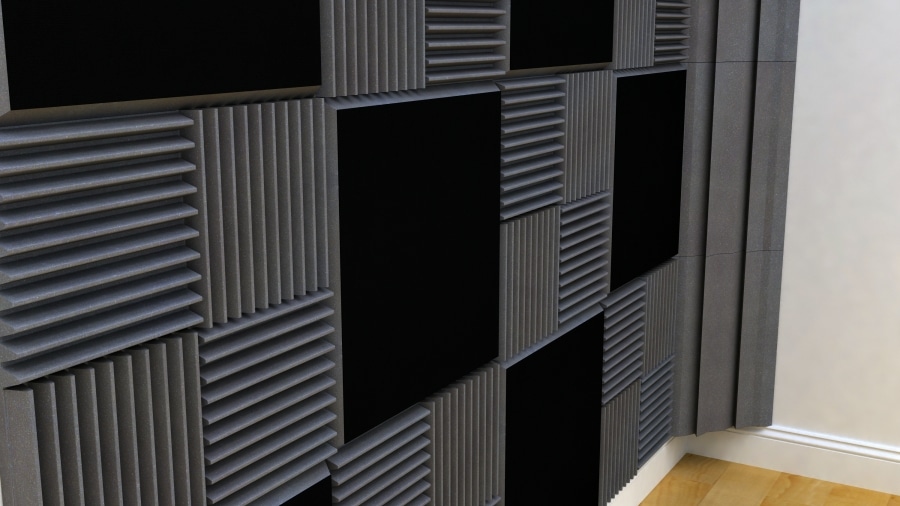Use foam, done!
Wrong.

These foams are only capable of handling high frequency sounds and have no significant impact on mids and basses. As a result, the room feels mysterious, difficult to determine the direction, quickly tired and very um. Furthermore, due to their poor quality, these foams are very fragile, discolored and flammable.
Sticking the Carpet on the wall also significantly reduces the reverberation
Wrong.
Similar to sound-absorbing foam, carpet mainly only affects high and mid-high frequencies. Sticking carpet on the wall only makes the room even more unbalanced in terms of frequency response and unnatural sound. Very high frequencies will be less vibrating, but mid frequencies, bass will still be as old.
Foam in the cargo box can be used to absorb sound
Wrong.
Often used for lining and cushioning in cargo boxes. This type of foam usually has a closed cell structure (Closed-Cell), so their sound absorption effect is almost absent. In addition, the density is so low that the packing foam is useless for soundproofing.
Blankets, cotton cushions can be used as bass traps!
Wrong.
Some people use blankets, cotton cushions and consider it as a magical object to replace the basstrap when needed. Some even appreciate their “soundproof” feature. However, the first requirement for sound insulation is weight, the second is airtight. Both of these features are lacking in blankets and pillows. On the other hand, blankets and cushions can help absorb some of the high and mid frequencies, but the real problem with small rooms is in the bass frequencies and other cumulative acoustic effects.
The more diffusers you install, the better the room will sound
Wrong.
The use of a diffuser is an increasingly popular trend because of its beautiful appearance, solving some very noticeable acoustic problems even for inexperienced ears like flutter echo, avoiding the dull sound in the room.
However, when the diffuser is prioritized too much and used incorrectly, the result will be even worse when you… do nothing because of the imbalance in room reverb, room frequency response. Moreover, when the diffuser is placed too close, the reflected sound waves from the diffuser have not yet accumulated to form a evenly distributed sound area, what you hear will be individual sound rays that differ in phase, leading to reduce the smoothness and fidelity of the room’s sound and have a high risk of comb-filtering.
Placing a lot of bass traps will lose the bass
Wrong.
Opposite. When there is enough Bass Trap to handle all problems related to low frequencies, the bass will sound very full, deep, powerful, and cleaner than ever.
Too much sound absorption will make the room unnatural
Wrong.
That phenomenon only occurs when the room does not handle it properly. When handled properly, the sound in the room will be very sharp, clear, positioning extremely easy, natural.
Just need to soundproof one or two specific wall
Wrong.
For ideal sound, ALL surfaces in the room must be treated! This is the common opinion of all acoustics experts because any empty piece that is left untreated can cause acoustic problems.
The more layers of material, the better the sound insulation!
Wrong.
This is foolish thinking that has the potential to cause huge financial losses to the client and worsen the soundproofing of existing designs. In acoustics, things that seem to be very logical, for example, making 3 identical walls will soundproof better than 2 identical walls, but have not had the expected results.
Therefore, it is necessary to understand very deeply about the mechanism of each type of device, design, and material.